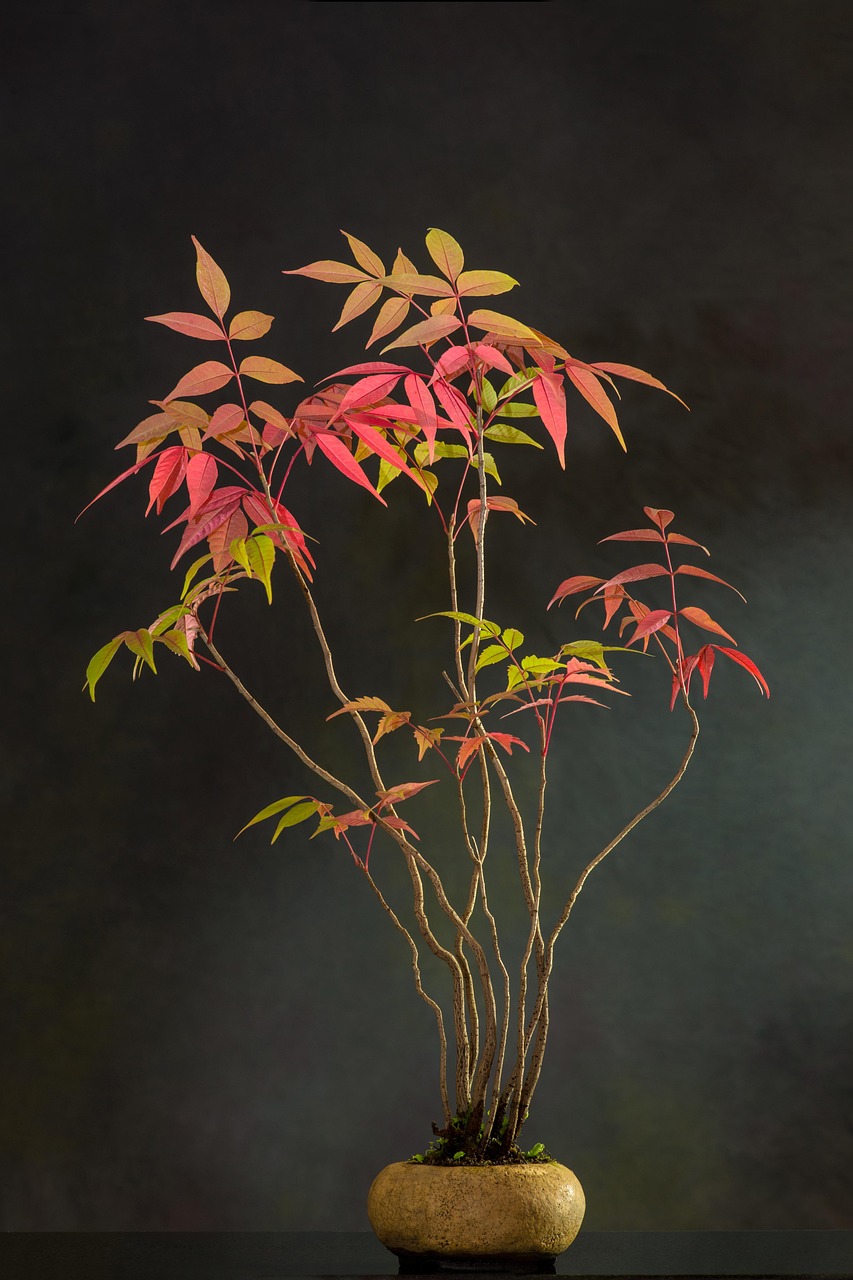
Autumn is a special season for bonsai. Your tree slows down, the leaves change into warm hues, and nature prepares for rest. But this season also requires specific care to keep your bonsai healthy and strong throughout the winter.
1. Autumn Colors and Leaf Fall
Deciduous trees now display their most beautiful colors. Maple varieties, such as the Japanese maple, shine in red and orange, while others turn yellow or gold. Leaf drop is completely natural: your bonsai stores energy in its roots to survive the winter.
👉 Tip: regularly remove fallen leaves from the pot and soil to prevent mold.
2. Pruning and Wiring
The growing season is over, making autumn a good time for minor adjustments:
- Prune dead branches and excess shoots carefully.
- Wiring is also possible now: branches are less sap-rich and easier to bend without breaking.
👉 Note: avoid heavy pruning. Your bonsai still needs energy to get through the winter.
3. Reducing Fertilization
During summer, you may have used more fertilizer to stimulate growth. In autumn, reduce this:
- Use light, organic fertilizers until the end of October.
- After that, stop fertilizing so your bonsai can enter its rest period.
This allows your tree to build natural reserves without being stimulated to grow further.
4. Watering
Even though growth slows down, your bonsai still needs water.
- Check the soil daily; it should never dry out completely.
- Be careful not to overwater during rainy days – ensure excess water can drain well.
👉 Tip: autumn weather can be unpredictable, so monitor moisture levels closely.
5. Preparing for the Cold
Autumn is the perfect time to plan ahead:
- Shelter: place sensitive bonsai in a protected spot, away from strong wind.
- Frost tolerance: maples can handle light to moderate frost; protection is only needed during prolonged, severe frost or in very small pots.
- Pot check: small pots freeze faster; extra protection with bubble wrap or a cold frame helps.
6. Autumn Care for Specific Bonsai Types
🍁 Japanese Maple (Acer palmatum)
-
Shines in red and orange autumn colors.
-
Tolerates light to moderate frost without issues.
-
Extra protection only needed during prolonged, severe frost or in small pots.
-
Remove fallen leaves promptly to prevent mold.
🌲 Pine Trees (Pinus species)
- Remain green but require rest.
- Yellowing needles in autumn are normal.
- Water moderately; never let the soil dry out completely.
🌳 Zelkova and Elm (Ulmus parvifolia, Zelkova serrata)
- Beautiful yellow autumn colors.
- More frost-tolerant than maples, but provide shelter during severe frost.
- Major pruning is not necessary in autumn.
🌿 Linden (Tilia species)
- Leaves may fall early.
- Sensitive to waterlogging → ensure good drainage.
- Extra root protection needed in severe frost.
🌸 Flowering Bonsai (Prunus species)
- Autumn prepares the tree for spring blooms.
- Do not prune now; let the tree retreat naturally.
- Protect buds from strong wind.
7. Enjoy the Moment
Besides caring for your bonsai, take the time to enjoy it. Autumn colors turn your bonsai into a living piece of art. Take a moment to observe, admire, and photograph it.
📷 Autumn Inspiration: Share your bonsai in autumn colors on Instagram or Facebook with #tSekaibonsai – we look forward to seeing your creations!
